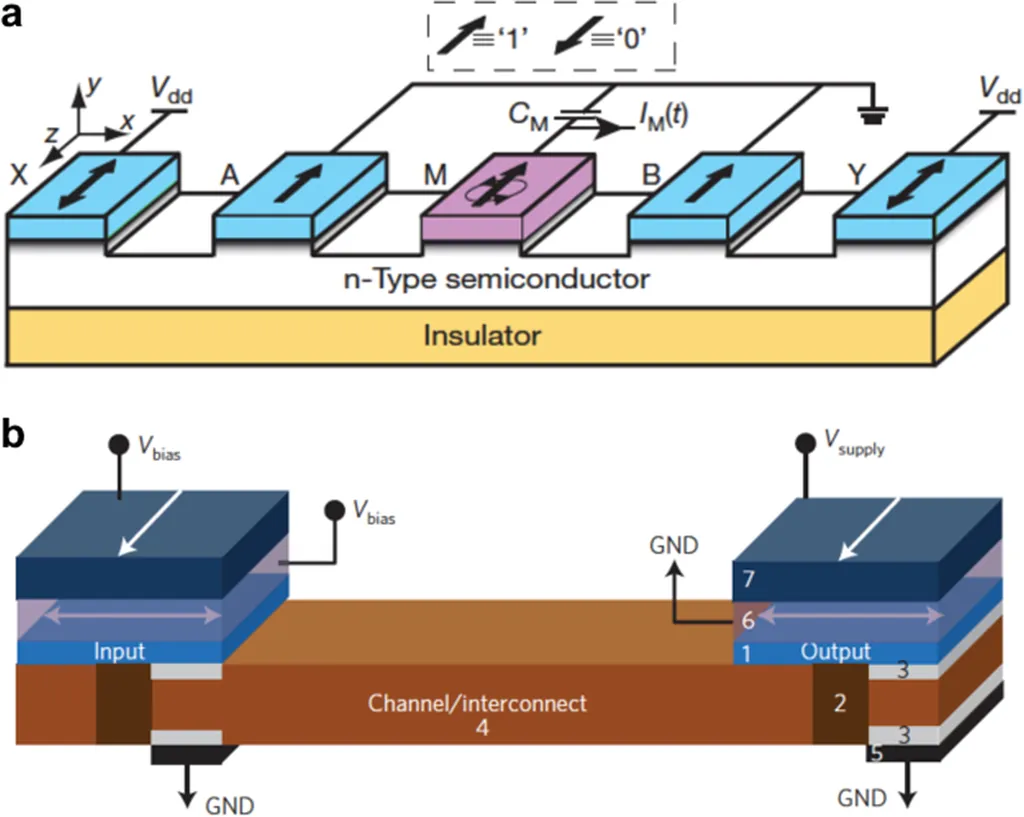In a groundbreaking development for the energy-efficient computing sector, researchers have demonstrated a novel approach to spin-orbit torque (SOT) switching at room temperature, using a unique combination of two-dimensional (2D) van der Waals (vdW) materials. This advancement, led by Pradeep Raj Sharma from the Department of Materials Science and Engineering at Yonsei University in Seoul, South Korea, could significantly impact the future of spintronic devices, offering a more efficient and scalable solution for data storage and processing.
Spin-orbit torque is a mechanism that enables low-energy and high-speed switching in spintronic devices, which are components that exploit the spin of electrons rather than their charge. The research team focused on a heterostructure composed of the 2D-vdW ferromagnetic material Fe3GaTe2 (FGaT) and the 2D-vdW topological semimetal WTe2. The unique anisotropic Fermi surface of WTe2, stemming from its reduced crystal symmetry, allows for field-free deterministic SOT switching.
“This is a significant leap forward in the field of spintronics,” said Sharma. “Our findings demonstrate an unprecedentedly low threshold switching current density and a high spin Hall angle, which are crucial for developing energy-efficient and high-performance devices.”
The team reported a threshold switching current density of 6.5 × 109 A m−2 at zero field and a spin Hall angle of 8.5, representing a nearly 100-fold improvement over previously reported 3D heavy metal (HM)/FM systems. The spin Hall conductivity and the switching power density reported are about 1.3 × 106 S m−1 and 0.33 × 1015 W m−3, respectively, indicating efficient device performance at low power consumption.
The implications of this research are vast, particularly for the energy sector. As the demand for data storage and processing continues to grow, the need for more energy-efficient technologies becomes increasingly critical. Spintronic devices, which leverage the spin of electrons, offer a promising avenue for reducing energy consumption. The development of field-free, highly efficient SOT switching at room temperature brings us one step closer to realizing the full potential of these devices.
“This research highlights the importance of exploring novel materials and their combinations to push the boundaries of what is possible in spintronics,” Sharma added. “The unique properties of 2D-vdW materials and their heterostructures offer a promising platform for developing next-generation, highly advanced, room-temperature spin-electronic devices.”
The study, published in the journal ‘Applied Surface Science Advances’ (translated to English as ‘Advances in Applied Surface Science’), underscores the potential of 2D-vdW materials in revolutionizing the field of spintronics. As researchers continue to explore and develop these materials, we can expect to see significant advancements in energy-efficient computing and data storage technologies.
This research not only opens new avenues for fundamental scientific exploration but also paves the way for practical applications that could transform the energy sector. By enabling more efficient and scalable spintronic devices, this work could contribute to the development of technologies that are crucial for addressing the growing energy demands of our digital world.

